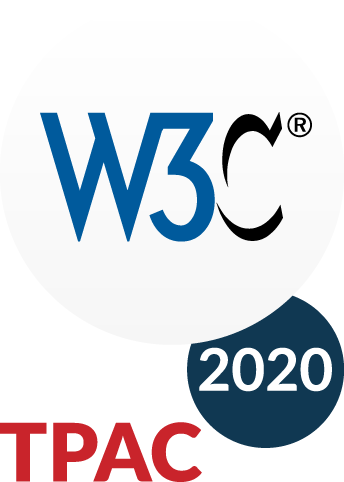W3C opens Diversity Fund applications for TPAC 2020
9 September 2020 | Archive
 TPAC registration just opened and we are opening applications for the Diversity Fund. We believe that more diversity means better representation, which leads to better and more inclusive design. We believe that more background, more use cases, more edge cases, lead to a better Web. More diversity also brings higher quality results. Our CEO blogged last June, giving the 2020 update on Diversity and Inclusion at W3C.
TPAC registration just opened and we are opening applications for the Diversity Fund. We believe that more diversity means better representation, which leads to better and more inclusive design. We believe that more background, more use cases, more edge cases, lead to a better Web. More diversity also brings higher quality results. Our CEO blogged last June, giving the 2020 update on Diversity and Inclusion at W3C.
W3C has established again a TPAC Diversity Fund, sponsored by W3C Members Adobe, Samsung Electronics, Coil, Littleguy SL, Microsoft, TetraLogical, Siteimprove; and one anonymous individual sponsor. This year, for the first time W3C itself is contributing toward that Fund and we expect to continue contributing in subsequent years. It is a decision that W3C Management took last November. W3C is contributing $5,000 toward the 2020 Diversity Fund.
Diversity Fund applicants must be from a group that is under-represented in the Web community, and unable to participate in TPAC without financial help. The application form has further information notably on what “under-represented” means, and applications are due by 27 September 2020 for determination on 5 October 2020.
W3C receives donation of Oculus Go Headsets to further work on immersive captions
26 August 2020 | Archive
 Thank you to Facebook for the donation of Oculus Go Headsets to advance the work of the Immersive Captions Community Group, which is exploring accessible augmentative and virtual reality.
Thank you to Facebook for the donation of Oculus Go Headsets to advance the work of the Immersive Captions Community Group, which is exploring accessible augmentative and virtual reality.
This W3C Community Group launched in the Fall of 2019 with a mission to identify, research, and where appropriate recommend best practices for captions in Immersive Media (Games & XR). It appreciates the opportunity to use Oculus Go Headsets as a platform for researching access, activation, and display settings for captions, to help ensure communication accessibility in augmentative and virtual reality.







